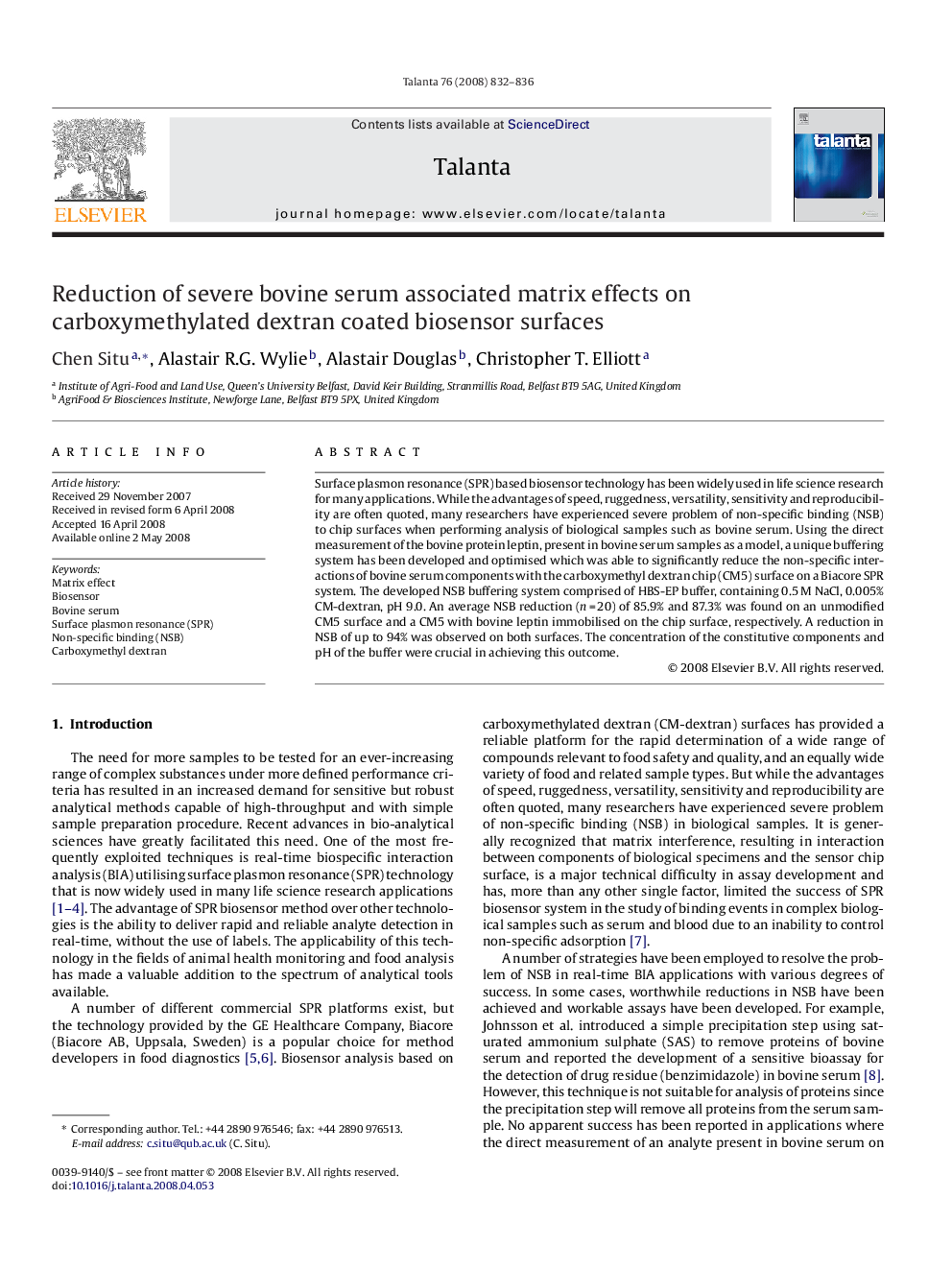| Article ID | Journal | Published Year | Pages | File Type |
|---|---|---|---|---|
| 1243388 | Talanta | 2008 | 5 Pages |
Surface plasmon resonance (SPR) based biosensor technology has been widely used in life science research for many applications. While the advantages of speed, ruggedness, versatility, sensitivity and reproducibility are often quoted, many researchers have experienced severe problem of non-specific binding (NSB) to chip surfaces when performing analysis of biological samples such as bovine serum. Using the direct measurement of the bovine protein leptin, present in bovine serum samples as a model, a unique buffering system has been developed and optimised which was able to significantly reduce the non-specific interactions of bovine serum components with the carboxymethyl dextran chip (CM5) surface on a Biacore SPR system. The developed NSB buffering system comprised of HBS-EP buffer, containing 0.5 M NaCl, 0.005% CM-dextran, pH 9.0. An average NSB reduction (n = 20) of 85.9% and 87.3% was found on an unmodified CM5 surface and a CM5 with bovine leptin immobilised on the chip surface, respectively. A reduction in NSB of up to 94% was observed on both surfaces. The concentration of the constitutive components and pH of the buffer were crucial in achieving this outcome.
